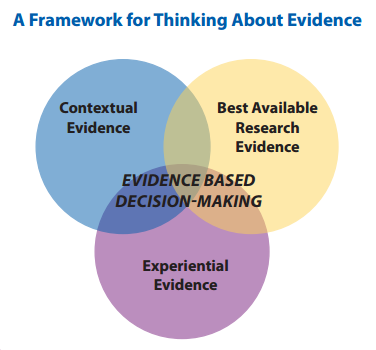
Medium
- WCSAP Webpage
Topic
- Best Practices
- Theory & Concepts
While we do have an emerging evidence base for effective prevention programs, it is still relatively limited and may not be appropriate for the community you are working with. Sometimes we hear that a research evidence-base is the most important factor in programming. However here in Washington State, and many other places too, we also prioritize community specific, community-driven prevention initiatives and these do not always have an evidence-base established. This tip shares resources to learn more about different types of evidence, based in research and community expertise, that preventionists can utilize when building a program.
Evidence Based Decision-Making
The Centers for Disease Control and Prevention (CDC) developed an online interactive resource that explores a process called Evidence Based Decision-Making.
Evidence Based Decision-Making is a process for making decisions about a program, practice, or policy that is grounded in the best available research evidence and informed by experiential evidence from the field and relevant contextual evidence.
We suggest reviewing this Overview of the Evidence Project and/or taking the 1-hour training “Understanding Evidence” to learn more about the different types of evidence, explore resources to help you gather your evidence.